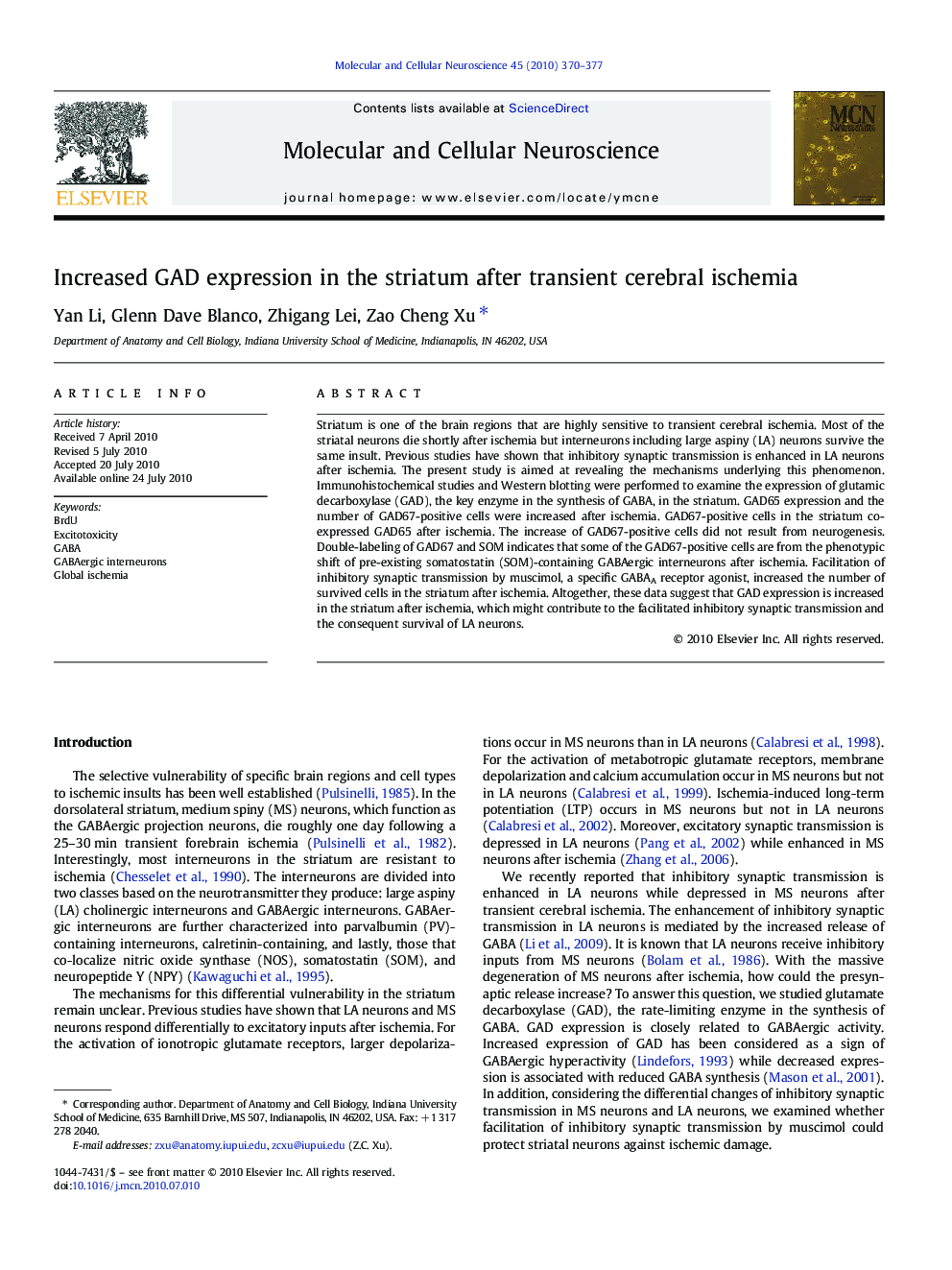| Article ID | Journal | Published Year | Pages | File Type |
|---|---|---|---|---|
| 10956609 | Molecular and Cellular Neuroscience | 2010 | 8 Pages |
Abstract
Striatum is one of the brain regions that are highly sensitive to transient cerebral ischemia. Most of the striatal neurons die shortly after ischemia but interneurons including large aspiny (LA) neurons survive the same insult. Previous studies have shown that inhibitory synaptic transmission is enhanced in LA neurons after ischemia. The present study is aimed at revealing the mechanisms underlying this phenomenon. Immunohistochemical studies and Western blotting were performed to examine the expression of glutamic decarboxylase (GAD), the key enzyme in the synthesis of GABA, in the striatum. GAD65 expression and the number of GAD67-positive cells were increased after ischemia. GAD67-positive cells in the striatum co-expressed GAD65 after ischemia. The increase of GAD67-positive cells did not result from neurogenesis. Double-labeling of GAD67 and SOM indicates that some of the GAD67-positive cells are from the phenotypic shift of pre-existing somatostatin (SOM)-containing GABAergic interneurons after ischemia. Facilitation of inhibitory synaptic transmission by muscimol, a specific GABAA receptor agonist, increased the number of survived cells in the striatum after ischemia. Altogether, these data suggest that GAD expression is increased in the striatum after ischemia, which might contribute to the facilitated inhibitory synaptic transmission and the consequent survival of LA neurons.
Related Topics
Life Sciences
Biochemistry, Genetics and Molecular Biology
Cell Biology
Authors
Yan Li, Glenn Dave Blanco, Zhigang Lei, Zao Cheng Xu,
